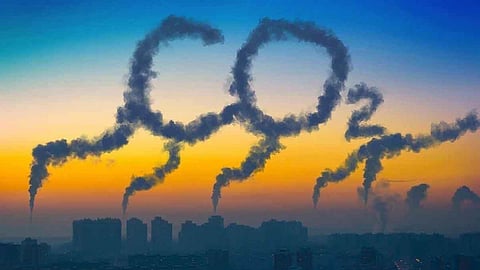

New Delhi: India must deploy public capital strategically to bridge the financing gap for green steel projects and avoid locking in carbon-intensive technology for the next 30–40 years, the Institute for Energy Economics and Financial Analysis (IEEFA) has said. Releasing a new briefing note, the think-tank warned that with 92 percent of India’s planned expansion from 180 million tonnes (MT) to 300 MT still not constructed, choices made now will determine emissions trajectories for decades.
Follow Energy Watch on X
“Carbon lock-in occurs when steel plants with 30–40-year lifespans are built with conventional technology, locking in emissions until 2060–70. This could affect India’s net-zero goals,” said Saurabh Trivedi, Sustainable Finance Specialist at IEEFA and co-author of the note.
IEEFA’s analysis underscores the sector’s global importance: developing economies today produce over 70 percent of the world’s steel, compared to less than 30 percent in 1995. If India’s new additions continue to rely on blast furnaces, annual emissions could double, undermining the country’s 2070 net-zero target.
International evidence shows that public support for green steel ranges from US$110 to US$1,168 per tonne of CO₂ abated — as much as 13 times the EU carbon price — indicating that carbon pricing alone cannot drive decarbonisation.
Projects that attempted gas-based “transitional” pathways have struggled. Cleveland-Cliffs’ US project failed to secure a green premium despite grants, and ArcelorMittal cancelled its grant-supported project in Germany. In contrast, integrated hydrogen-based projects like Sweden’s Stegra secured long-term offtake agreements with 20–30 percent price premiums. “The market data shows buyers will pay premiums for steel with end-to-end green credentials spanning renewable energy, hydrogen production, and steelmaking,” said Meenakshi Viswanathan, Energy Finance Intern at IEEFA.
Traditional blast furnaces rely on metallurgical coal, much of which India imports from Australia. As more BF-BOF capacity is added, met coal imports are expected to nearly double from 75 MT in 2024 to 149 MT by 2035, heightening concerns around energy security.
IEEFA noted that green steel technologies, while technically proven, face a financing “valley of death” due to high capital costs, long payback periods and untested commercial viability. Nearly USD 24 billion has been invested globally in steel decarbonisation projects, almost all of which relied heavily on public finance.
“While venture capital and private equity typically fund emerging technologies, these sources may not be well-suited for green steel given its low technology readiness level, massive capital requirements, and extended payback periods,” Viswanathan said.
The government is developing a National Mission for Sustainable Steel with an estimated Rs 5,000 crore (USD 600 million) outlay aimed at decarbonising steel production. Up to 80 percent of the funds are expected to support secondary steel mills. A draft Green Public Procurement (GPP) policy proposes mandating that 25–37 percent of steel used in public projects be low-carbon, although earlier proposals for centralised procurement were rejected in 2024.
India’s Carbon Credit Trading Scheme (CCTS) will impose emissions-intensity targets across nine industrial sectors, including steel, when trading begins in October 2026, but its impact will depend on carbon price levels.
Follow Energy Watch on LinkedIN
“These measures signal government intent, but the scale of proposed funding remains modest,” Viswanathan said. “Ultimately, India’s green steel transition demands strategic public capital deployment that ensures judicious use of taxpayers' money, while spurring innovation and investment from industry, global financiers, and technology providers,” added Trivedi.
